Jeep Avenger vs SsangYong Korando – Which model is better for everyday use?
Compare performance, boot capacity, efficiency and price at a glance.
Find out which car is the better choice for you – Jeep Avenger or SsangYong Korando?
Costs and Efficiency:
Price and efficiency are key factors when choosing a car – and this is often where the real differences emerge.
Jeep Avenger has a noticeable advantage in terms of price – it starts at 21900 £, while the SsangYong Korando costs 27000 £. That’s a price difference of around 5049 £.
Fuel consumption also shows a difference: Jeep Avenger manages with 4.90 L and is therefore clearly more efficient than the SsangYong Korando with 7.50 L. The difference is about 2.60 L per 100 km.
In terms of energy consumption, the advantage goes to the Jeep Avenger: with 15.50 kWh per 100 km, it’s slight more efficient than the SsangYong Korando with 16.80 kWh. That’s a difference of about 1.30 kWh.
As for range, the Jeep Avenger performs somewhat better – achieving up to 400 km, about 61 km more than the SsangYong Korando.
Engine and Performance:
Under the bonnet, it becomes clear which model is tuned for sportiness and which one takes the lead when you hit the accelerator.
When it comes to engine power, the SsangYong Korando has a a bit edge – offering 190 HP compared to 156 HP. That’s roughly 34 HP more horsepower.
In acceleration from 0 to 100 km/h, the SsangYong Korando is minimal quicker – completing the sprint in 8.40 s, while the Jeep Avenger takes 9 s. That’s about 0.60 s faster.
In terms of top speed, the Jeep Avenger performs barely noticeable better – reaching 194 km/h, while the SsangYong Korando tops out at 191 km/h. The difference is around 3 km/h.
There’s also a difference in torque: SsangYong Korando pulls noticeable stronger with 360 Nm compared to 260 Nm. That’s about 100 Nm difference.
Space and Everyday Use:
Whether family car or daily driver – which one offers more room, flexibility and comfort?
Both vehicles offer seating for 5 people.
In curb weight, Jeep Avenger is evident lighter – 1180 kg compared to 1517 kg. The difference is around 337 kg.
In terms of boot space, the SsangYong Korando offers clearly perceptible more room – 551 L compared to 380 L. That’s a difference of about 171 L.
In maximum load capacity, the Jeep Avenger performs minimal better – up to 1277 L, which is about 29 L more than the SsangYong Korando.
When it comes to payload, Jeep Avenger minimal takes the win – 502 kg compared to 463 kg. That’s a difference of about 39 kg.
Who wins the race?
The SsangYong Korando proves to be only a minor advantage and therefore becomes our DriveDuel Champion!
SsangYong Korando is the better all-rounder in this comparison.
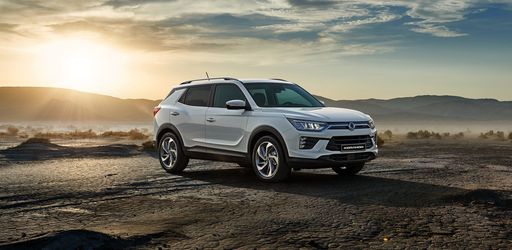
SsangYong Korando
Jeep Avenger
The Jeep Avenger is a compact SUV that brings a blend of rugged design and modern technology, making it ideal for both urban and off-road adventures. Its robust build and distinctive styling capture Jeep's iconic spirit while offering a comfortable and refined driving experience. With advanced safety features and a versatile interior, the Avenger caters to a wide range of drivers looking for practicality and excitement.
details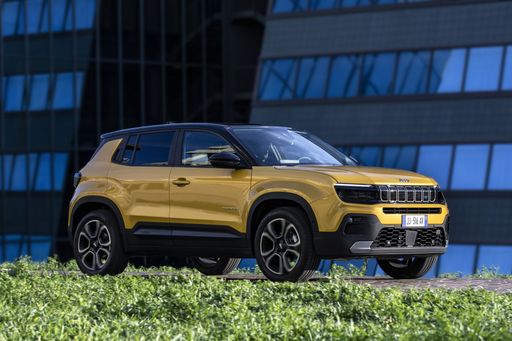 @ Stellantis
@ Stellantis
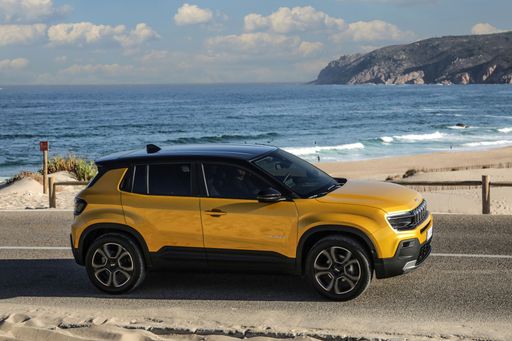 @ Stellantis
@ Stellantis
 @ Stellantis
@ Stellantis
 @ Stellantis
@ Stellantis
 @ Stellantis
@ Stellantis
SsangYong Korando
The SsangYong Korando offers a blend of contemporary design and practicality, making it an appealing choice for urban adventurers. Its spacious interior and comfortable seating ensure a pleasant driving experience for both driver and passengers. With its reliable performance and advanced features, the Korando stands out in the competitive SUV market.
details @ Ssangyong
@ Ssangyong
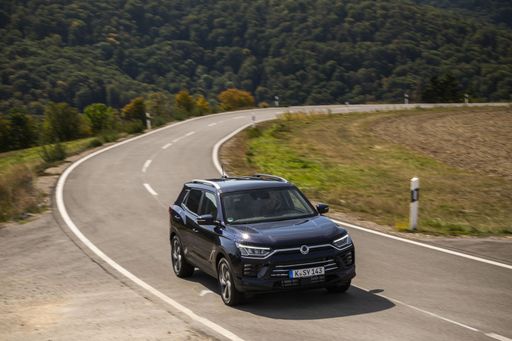 @ Ssangyong
@ Ssangyong
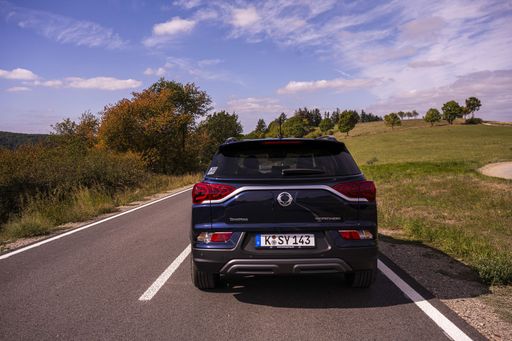 @ Ssangyong
@ Ssangyong
 @ Ssangyong
@ Ssangyong
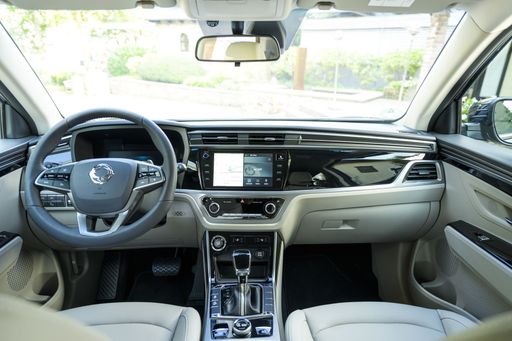 @ Ssangyong
@ Ssangyong

|

|
|
|
|
Costs and Consumption |
|
|---|---|
|
Price
21900 - 36900 £
|
Price
27000 - 42000 £
|
|
Consumption L/100km
4.9 - 5.7 L
|
Consumption L/100km
7.5 - 8.6 L
|
|
Consumption kWh/100km
15.50 kWh
|
Consumption kWh/100km
16.80 kWh
|
|
Electric Range
400 km
|
Electric Range
339 km
|
|
Battery Capacity
51 kWh
|
Battery Capacity
-
|
|
co2
0 - 129 g/km
|
co2
0 - 197 g/km
|
|
Fuel tank capacity
44 L
|
Fuel tank capacity
50 L
|
Dimensions and Body |
|
|---|---|
|
Body Type
SUV
|
Body Type
SUV
|
|
Seats
5
|
Seats
5
|
|
Doors
5
|
Doors
5
|
|
Curb weight
1180 - 1520 kg
|
Curb weight
1517 - 1840 kg
|
|
Trunk capacity
325 - 380 L
|
Trunk capacity
551 L
|
|
Length
4084 - 4088 mm
|
Length
4450 - 4465 mm
|
|
Width
1776 mm
|
Width
1870 mm
|
|
Height
1527 - 1541 mm
|
Height
1620 - 1645 mm
|
|
Max trunk capacity
1218 - 1277 L
|
Max trunk capacity
1248 L
|
|
Payload
494 - 502 kg
|
Payload
410 - 463 kg
|
Engine and Performance |
|
|---|---|
|
Engine Type
Electric, Petrol, Petrol MHEV
|
Engine Type
Petrol, Electric
|
|
Transmission
Automatic, Manuel
|
Transmission
Manuel, Automatic
|
|
Transmission Detail
Reduction Gearbox, Manual Gearbox, Dual-Clutch Automatic
|
Transmission Detail
Manual Gearbox, Automatic Gearbox, Reduction Gearbox
|
|
Drive Type
Front-Wheel Drive, All-Wheel Drive
|
Drive Type
Front-Wheel Drive, All-Wheel Drive
|
|
Power HP
100 - 156 HP
|
Power HP
163 - 190 HP
|
|
Acceleration 0-100km/h
9 - 10.6 s
|
Acceleration 0-100km/h
8.40 s
|
|
Max Speed
150 - 194 km/h
|
Max Speed
156 - 191 km/h
|
|
Torque
205 - 260 Nm
|
Torque
260 - 360 Nm
|
|
Number of Cylinders
3
|
Number of Cylinders
4
|
|
Power kW
74 - 115 kW
|
Power kW
120 - 140 kW
|
|
Engine capacity
1199 cm3
|
Engine capacity
1497 cm3
|
General |
|
|---|---|
|
Model Year
2023 - 2025
|
Model Year
2021 - 2023
|
|
CO2 Efficiency Class
A, D, C
|
CO2 Efficiency Class
F, G, A
|
|
Brand
Jeep
|
Brand
SsangYong
|
What drivetrain options does the Jeep Avenger have?
Available configurations include Front-Wheel Drive or All-Wheel Drive.
The prices and data displayed are estimates based on German list prices and may vary by country. This information is not legally binding.
